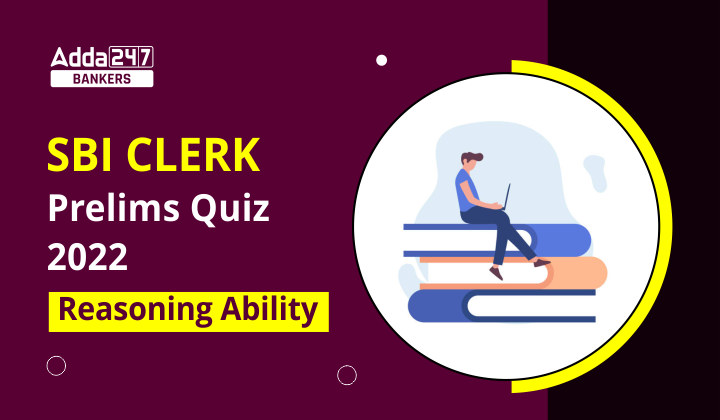Directions (1-5): Study the following arrangement carefully and answer the questions given below.
9 D H 8 I % T @ I J M Q 3 © R 4 P W $ Y 2 A E 6 # U K 5 U 1 & Z N
Q1. Which of the following element is the seventh to the left of the fifteenth from the left end of the given arrangement?
(a) I
(b) T
(c) @
(d) J
(e) None of these
Q2. How many such numbers are there in the given arrangement, each of which is immediately preceded by a consonant and immediately followed by a vowel?
(a) None
(b) One
(c) Two
(d) Three
(e) More than three
Q3. How many such symbols are there in the given arrangement, each of which is immediately followed by a letter and immediately preceded by a number?
(a) None
(b) One
(c) Two
(d) Three
(e) More than three
Q4. How many such consonants are there in the given arrangement, each of which is immediately preceded by a consonant and immediately followed by a symbol?
(a) None
(b) One
(c) Two
(d) Three
(e) More than three
Q5. Which of the following element is 18th from right end of the series?
(a) 4
(b) R
(c) P
(d) ©
(e) None of these
Directions (6-10): Study the following arrangement of symbols, digits and letters carefully to answer these given questions.
R € 9 3 S 6 H # 7 K $ L 2 ¥ B M J © 4 5 E 8 @ G π A
Q6. If all the numbers are deleted from the above arrangement, then which of the following element will be seventh to the left of fifth from the right end?
(a) K
(b) ¥
(c) B
(d) $
(e) None of these
Q7. How many such numbers are there in the above arrangement each of which is immediately preceded by a symbol?
(a) One
(b) Two
(c) Three
(d) Four
(e) None of these
Q8. How many such symbols are there in the above arrangement each of which is immediately preceded by a number and immediately followed by a consonant?
(a) two
(b) four
(c) one
(d) three
(e) None
Q9. If all the symbols are deleted from the above arrangement, then which of the following element will be the fourth to the right of twelfth from the right end?
(a) B
(b) J
(c) 2
(d) M
(e) None of these
Q10. Which of the following element is 6th to the left of the element which is 18th from the left end?
(a) $
(b) 2
(c) L
(d) M
(e) None of these
Directions (11-15): These questions are based on the following six numbers.
412 646 734 255 536 876
Q11. If we add 2 to the second digit of each number and subtract 1 from the first digit of each number, then which of the given will become the lowest number?
(a) 646
(b) 536
(c) 255
(d) 412
(e) None of these
Q12. If all the digits in each of the numbers are written in increasing order within than number, than which of the given number will become the second highest?
(a) 412
(b) 646
(c) 255
(d) 536
(e) None of these
Q13. If the first two digits of each number are interchanged, then which of the following numbers will become the highest number?
(a) 734
(b) 536
(c) 646
(d) 412
(e) 876
Q14. In each number, if we subtracted 1 in first digit and added 1 in last digit, then which among these number will be 2nd lowest number?
(a) 734
(b) 255
(c) 876
(d) 412
(e) None of these
Q15.If we replace all the odd digits in each number with zero, then which of the following number will become the lowest?
(a) 734
(b) 536
(c) 412
(d) 255
(e) 876
Solutions
S1. Ans. (c)
S2. Ans. (d)
Sol. H8I, Y2A, K5U
S3. Ans. (d)
Sol. 3©R, 6#U, 1&Z
S4. Ans. (b)
Sol. PW$
S5. Ans. (a)
S6. Ans. (d)
S7. Ans. (c)
Sol. € 9, # 7, © 4
S8. Ans. (a)
Sol. 2 ¥ B, 8 @ G
S9. Ans. (d)
S10. Ans. (c)
S11. Ans. (c)
S12. Ans. (b)
S13. Ans. (e)
S14. Ans. (d)
S15. Ans. (a)





 GA Capsule for SBI Clerk Mains 2025, Dow...
GA Capsule for SBI Clerk Mains 2025, Dow...
 The Hindu Review October 2022: Download ...
The Hindu Review October 2022: Download ...
 SBI Clerk Prelims Result 2025 Out, Direc...
SBI Clerk Prelims Result 2025 Out, Direc...







